May 12, 2025
Author:Jackson Watson
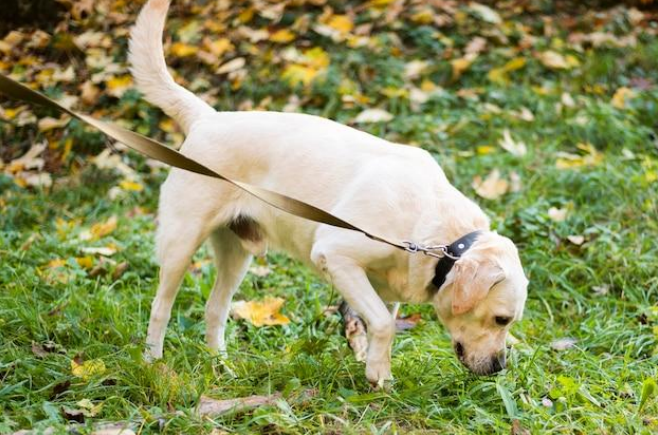
We’re talking about dog eating grass and throwing up foam, something that happens more often than you might think. Why does it matter? Well, it’s a clue about what’s going on with your pup’s health and happiness.
In this article, we’ll dig into why dogs munch on grass, what that foamy vomit means, and how to handle it. We’ll cover the behavior itself, the reasons behind the foam, possible health issues, when to call the vet, and tips to manage it. Let’s jump in and figure out what’s up with your furry friend!
Dogs eating grass isn’t exactly new. It goes way back to their wild roots. Think about wolves or other wild canines—they nibble on plants sometimes. Some folks say dogs eat grass because they’re missing something in their diet, like fiber. Others reckon it helps their tummy feel better, maybe by moving things along in their gut. Just like cats that throw up after eating due to rapid food intake or sensitivity, dogs may also vomit foam after munching on grass if their digestive system is irritated.
So, is this grass-eating thing okay? For most dogs, yeah, it’s pretty normal. Lots of healthy dogs chew on grass now and then. Vets see it all the time, and it’s usually no big deal. But here’s the catch: if your dog’s going at it like a buffet every day, that’s different. Occasional nibbling? Fine. Excessive munching? That might mean something’s off.
Now, let’s connect the dots between grass and vomiting. You’ve probably seen it—your dog eats grass, and soon after, up comes the dog eating grass and throwing up foam routine. Grass can tickle their stomach lining, making them gag. Some people think dogs do it on purpose to barf when they’re queasy. It’s like their version of a natural tummy reset. But studies show not every grass-eating session ends in vomit—only about a quarter of dogs actually puke. So, while it might irritate their gut enough to cause vomiting, it’s not always the goal. Either way, it’s a behavior worth watching.
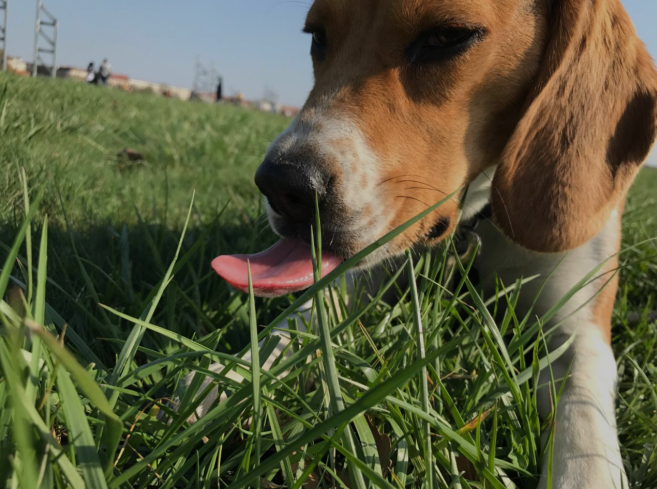
Picture this: your dog spits up after eating grass, and it’s not chunks of food—it’s this white, bubbly foam. What’s that about? That foam is a mix of stuff from their stomach—mucus, bile, and acids. Mucus coats the stomach to protect it, bile helps digest food, and acids break things down. When they vomit on an empty stomach, there’s no food to mix with, so it comes out frothy. The air gets whipped in as they heave, making it look like a cappuccino gone wrong. If your dog vomits often on an empty stomach, adding fiber-rich foods—similar to those used in healthy pet meal plans—can help soothe their tummy.
Why does grass spark this foamy mess? Grass isn’t exactly dog-friendly food. It’s tough and scratchy, so it can annoy their stomach lining. That irritation makes them want to toss it back up. If their stomach’s empty—say, they haven’t eaten breakfast yet—the vomit’s more likely to be foam. Bile can build up too, especially overnight, and grass just pushes it over the edge. That’s when you see the dog eating grass and throwing up foam show. It’s their body saying, “Nope, not keeping this down!”
For dogs that graze out of boredom or anxiety, enrichment ideas like keeping your pet entertained can make a big difference in breaking the habit.
Okay, so a one-off foam party? Probably fine. Frequent dog eating grass and throwing up foam could hint at something bigger, like a tummy issue or even stress. Pair it with other signs, and it’s time to think about a vet visit. We’ll get into those warning signs later, but for now, know that occasional foam isn’t a crisis, but a pattern might be. If your pup shows frequent signs of dog eating grass and throwing up foam, tracking their behavior like a hydration monitoring routine can help you spot patterns and get ahead of health issues.
Potential Causes and Health Concerns
Let’s start with food. If your dog’s diet is missing something—like fiber—they might turn to grass. Fiber keeps their digestion smooth, and without it, their gut gets cranky. A low-quality diet can do it too. That can upset their stomach, leading to the dog eating grass and throwing up foam combo. Switching to better grub might fix it.
Acid reflux works the same way, pushing them to nibble. Bigger issues, like inflammatory bowel disease, mess with digestion too. Parasites are sneaky culprits—worms or bugs in their system can cause vomiting. Even a simple infection might trigger it. If their tummy’s off, grass and foam might follow.
It’s not always physical, though. Sometimes it’s in their head. Bored dogs eat grass to kill time—same with stressed or anxious ones. Ever notice your pup munching more when you’re away? That could be it. The environment matters too. If the grass has pesticides or weed killer on it, that’s trouble. Toxic stuff can make them sick fast, and vomiting’s a quick response. Even certain plants in your yard might be the real problem, not just plain grass.
Now, the scary stuff. If dog eating grass and throwing up foam keeps happening, it might point to something serious. Pancreatitis—when the pancreas gets inflamed—can cause vomiting. Liver or kidney issues mess with their whole system, and foam might show up. These aren’t common, but they’re worth knowing about. If your dog’s losing weight, acting sluggish, or the vomiting won’t quit, it’s not just grass anymore. That’s when you need a pro to step in.
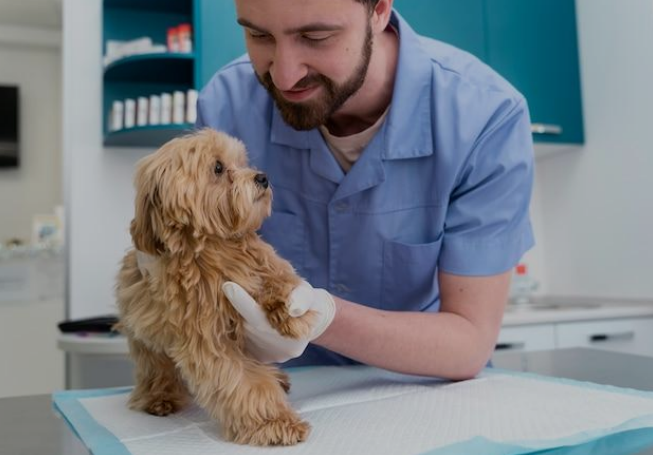
So, when do you stop shrugging it off and call the vet? Watch for these signs. If your dog’s vomiting all the time—say, more than once a week—that’s not normal. Blood in the vomit? Big no-no. Same goes if they’re super tired, won’t eat, or seem in pain. Weird poop, like diarrhea or nothing at all, adds to the worry. If dog eating grass and throwing up foam comes with any of these, don’t wait. Your pup’s telling you something’s wrong.
Vets have tools to figure this out. They might run blood tests to check organs like the liver or kidneys. X-rays or ultrasounds peek inside to spot blockages or swelling. Fecal exams hunt for parasites—those little jerks can hide well. Sometimes they’ll use a camera down the throat—called an endoscopy—to see the stomach directly. Allergy tests might pop up too if food’s the issue. These tests pin down why the foam keeps coming.
Getting to the vet fast matters. Ignoring it risks letting a small problem grow—like a tummy bug turning into something worse. Early catches mean easier fixes, like a diet change instead of surgery. Plus, your dog feels better sooner. I learned this with my dog once—waiting made a quick fix into a week of meds. Don’t mess around with health stuff—better safe than sorry.
Let’s talk fixes. Start with what they eat. Good food can cut down on grass cravings. Look for stuff with decent fiber—think pumpkin or green beans you mix in. It helps their digestion stay on track. If their kibble’s junk, upgrade it. High-quality food covers their needs, so they’re less likely to graze. Chat with your vet about diet and nutrition—they’ll point you to what works. A solid diet might stop the dog eating grass and throwing up foam cycle. Just as automatic feeders reduce overeating in cats, they can help schedule meals for dogs, preventing the empty-stomach vomiting that often accompanies grass-eating.
Next, keep their brain busy. Boredom’s a grass-eating trigger, so toss them some toys or a puzzle feeder. Walks and playtime burn off energy too—less munching, more fun. If they’re stressed, figure out why. Maybe they need more chill time with you. Training helps—teach them “leave it” when they eye the lawn. My friend’s dog quit grazing after a few weeks of keeping pets entertained. It takes effort, but it works.
Control what they get into. Make sure your yard’s grass is safe—no chemicals or nasty sprays. Stick to parasite prevention—fleas and worms love a free ride. If they roam, fence off risky plants. A clean, safe space cuts the odds of trouble. I started checking my lawn after Max got sick once—peace of mind’s worth it. A clean and chemical-free yard is crucial since grass treated with pesticides may lead to vomiting—just like toxins and unsafe plants affect cat safety indoors.
For mild cases, try easy stuff. A spoonful of canned pumpkin soothes their stomach. Probiotics—vet-approved ones—balance their gut. If it’s just a one-time foam fest, a bland meal like chicken and rice can settle things. Keep a log—note when they eat grass, vomit, or act funny. It’s gold for the vet. I used to scribble Max’s antics in a notebook—helped us nail down his digestive issues. Pet parents worried about what triggers vomiting in their animals should consider the gut health link—this applies equally to cats with vomiting and hydration issues.
Alright, let’s wrap this up. Dog eating grass and throwing up foam is something tons of dogs do. Sometimes it’s just them being weird—instincts kicking in or a boring afternoon. The foam? That’s their stomach reacting, usually no biggie if it’s rare. But if it’s constant, or they’re off their game, it might mean diet troubles, gut issues, or something nastier. Watch for those red flags and hit up the vet if needed. With smart food choices, fun activities, and a safe yard, you can keep your pup in top shape. Stay curious about their health—little tweaks can make a huge difference. Here’s to happy, grass-free days with your best buddy!
Label:
Popular Post

What to Feed a Sick Dog With No Appetite? [2025 Guide]
May 16, 2023

Troubleshooting Common Issues with Automatic Pet Feeders: Tips & Tricks for Pet Owners
Oct 26, 2023
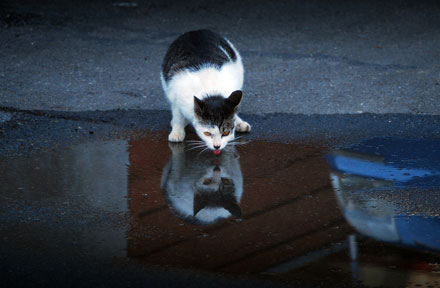
Why Does My Cat Cough After Drinking Water? 8 Potential Reasons
Mar 13, 2023
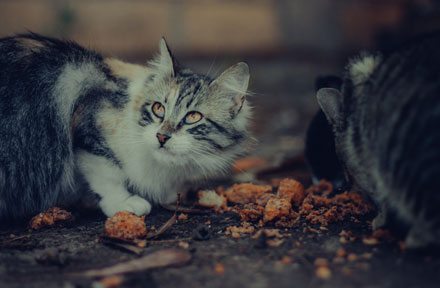
My Cat Only Eats A Little at A Time - What to Do?
Feb 27, 2023
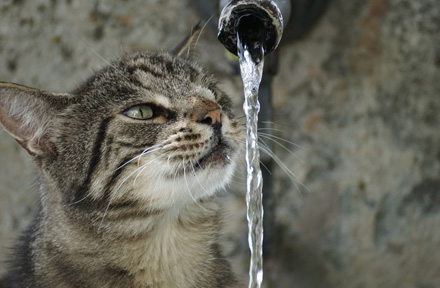
Why is My Cat Throwing up Water? Top 5 Causes Here
Feb 08, 2023
$99.99
$129.99
Copyright © 2025 WOPET. All Rights Reserved.